Back-checking hockey is a pivotal defensive strategy executed primarily in the neutral zone, shaping the dynamics of play as teams transition from offense to defense.
This critical aspect of the game involves players swiftly tracking and impeding the progress of opponents who possess the puck, aiming to limit their options and disrupt potential scoring opportunities.
Back-checking hockey is the art of defensive pursuit, a collective effort to thwart the opposing team’s advances before they reach the defensive zone.
The primary objective is to apply pressure, force turnovers, and strategically position players to counteract offensive maneuvers.
Successful backchecking requires a combination of skills, including precise timing, effective angling, and the ability to read the flow of the game.
It is not merely an individual responsibility but a cohesive team effort, where players communicate, coordinate, and execute strategies to neutralize the opponent’s offensive plays.
Understanding the fundamentals of backchecking is fundamental for any hockey player, as it forms the backbone of a robust defensive system, contributing significantly to a team’s overall success on the ice. Stay sharp.
Basics of Back-Checking Hockey
In ice hockey, the backcheck plays a crucial role in defensive strategy, primarily executed in the neutral zone.
This defensive transition aims to limit the opponent’s options as they advance toward the defensive team’s end zone.
Understanding the basics of backchecking is essential for any hockey player looking to contribute to a solid defensive effort.
Timing and Angling
Effective backchecking requires impeccable timing and proper angling. Players must assess the opponent’s movements and position themselves strategically to disrupt the offensive play.
By choosing the right moment to engage and taking the correct angle, a back checker can impede the opponent’s progress and force turnovers.
Read and React
A successful backcheck involves a combination of reading the game and reacting swiftly to the opponent’s actions. Players need to anticipate passes, identify potential threats, and adjust their positioning accordingly.
Being able to read the play allows back checkers to make informed decisions on when to pressure the puck carrier or cover passing lanes.
Communication with Teammates
Effective communication among teammates is essential in executing a cohesive backchecking strategy.
Players need to relay information about the opponent’s movements, allowing teammates to adjust their positions accordingly.
Clear communication ensures that everyone is on the same page, reducing defensive vulnerabilities and increasing the chances of a successful backcheck.
Maintaining Defensive Structure
While executing the backcheck, players must maintain the overall defensive structure. This involves avoiding overcommitting to the puck carrier and staying aware of other offensive threats.
By staying disciplined and holding their positions, backcheckers can create a more formidable defensive barrier, making it challenging for the opposing team to penetrate the defensive zone.
Transition to Offensive Play
A well-executed backcheck can seamlessly transition into an offensive opportunity. Once the puck is regained, backcheckers should be prepared to quickly transition to an offensive mindset.
This requires swift passing, smart decision-making, and exploiting any gaps in the opponent’s defense created during the backcheck.
By capitalizing on turnovers, a team can turn a defensive play into a scoring opportunity.
Understanding and mastering the basics of backchecking not only enhances a player’s defensive capabilities but also contributes to the overall success of the team on the ice.
The Fundamentals of Back Checking in Hockey
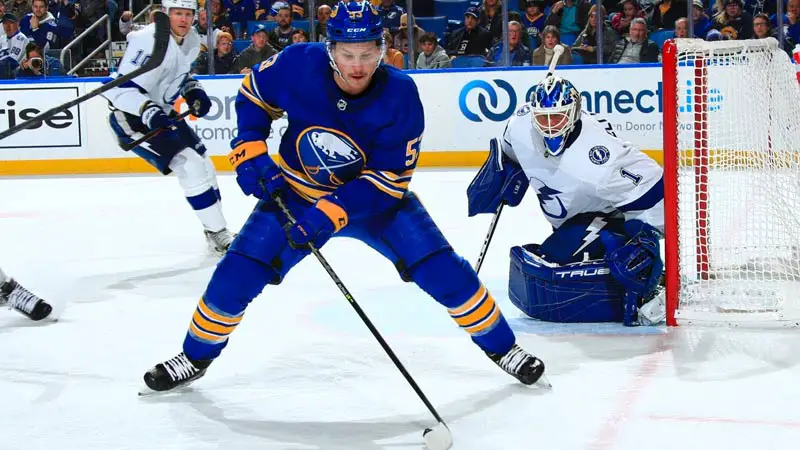
In the fast-paced world of ice hockey, mastering the fundamentals of backchecking is indispensable for any player aiming to excel in defensive responsibilities.
Backchecking, a defensive transition play primarily executed in the neutral zone, involves a set of fundamental skills and strategies that contribute to thwarting the opponent’s offensive advances.
Skating Technique and Speed
At the core of effective backchecking lies superior skating technique and speed. Players need to accelerate quickly, maintaining a low stance to generate maximum power.
Proficient backcheckers utilize powerful strides to close the gap between themselves and the opponent swiftly.
Superior skating not only allows for timely interception but also provides the agility needed to adjust to the opponent’s movements.
Stick Positioning and Active Stick Checks
A key fundamental in backchecking is maintaining the correct stick positioning.
Players aim to disrupt passing lanes and poke-check the opponent’s stick to regain possession. An active stick not only intercepts passes but also pressures the puck carrier into making mistakes.
Backcheckers must master the art of stick checks, ensuring they are precise and well-timed to effectively thwart the opponent’s offensive plays.
Body Position and Defensive Awareness
Effective backchecking requires players to maintain optimal body position, staying between the opponent and their own goal.
Understanding the opponent’s positioning and recognizing potential threats are crucial components of defensive awareness.
By staying low, balanced, and anticipating the opponent’s next move, backcheckers can effectively impede progress and force turnovers in the neutral zone.
Decision-Making Under Pressure
Backchecking often occurs in high-pressure situations where split-second decisions can make a difference.
Players need to make quick and smart decisions, choosing whether to engage the puck carrier, cover passing lanes, or support teammates.
Developing the ability to make sound decisions under pressure is essential for a back checker to be effective in disrupting the opponent’s offensive flow.
Transition to Defensive Zone Coverage
As the opponent approaches the defensive zone, backcheckers must seamlessly transition from neutral zone coverage to a defensive stance.
This involves recognizing when to stop the opponent’s progress and start focusing on preventing scoring opportunities near the team’s net.
Effective backchecking contributes not only to disrupting plays in the neutral zone but also to establishing a strong defensive presence in the team’s end.
Mastering the fundamentals of backchecking involves a combination of skating prowess, stick skills, defensive awareness, and the ability to make quick decisions under pressure.
Defensive Strategies and Tactics of Back-Checking
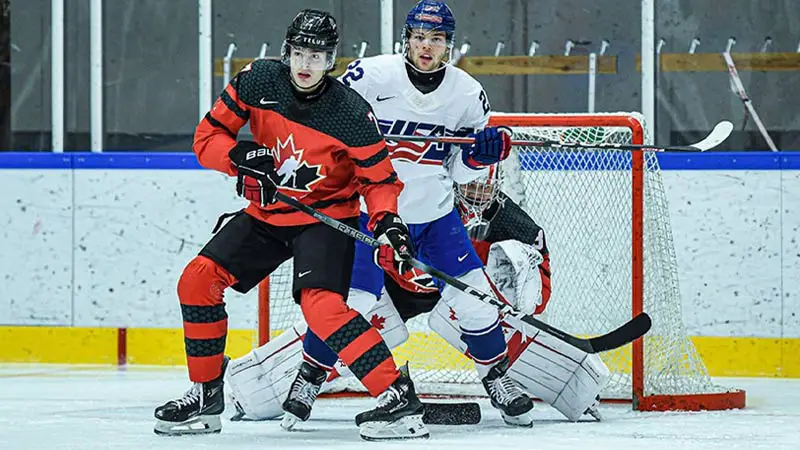
In the dynamic realm of ice hockey, effective backchecking is not only about individual skills but also relies on well-coordinated defensive strategies and tactics.
A robust defensive approach during backchecking plays a pivotal role in limiting the opponent’s options and ensuring the integrity of the team’s defensive structure.
Here are key defensive strategies and tactics associated with backchecking:
Formation and Positional Play
Successful backchecking begins with a well-defined defensive formation and strategic positional play. Players must maintain a cohesive structure, covering passing lanes and blocking potential offensive routes.
This collective defensive formation creates a formidable barrier, making it challenging for the opponent to navigate through the neutral zone and enter the defensive zone.
Gap Control
Gap control is a crucial defensive tactic in backchecking, emphasizing the importance of maintaining an optimal distance between the backchecker and the opponent.
By controlling the gap effectively, players can disrupt the opponent’s decision-making process and limit their ability to execute plays.
Proper gap control enables back checkers to apply pressure without leaving themselves vulnerable to quick maneuvers by the puck carrier.
Supportive Backchecking
Defensive teamwork is exemplified through supportive backchecking, where players collaborate to stifle the opponent’s advances.
This involves players not directly engaged with the puck carrier providing support by anticipating potential passing options, covering open players, and offering outlets for the back checker.
Supportive backchecking ensures a comprehensive defensive effort that extends beyond individual responsibilities.
Forcing Turnovers and Regaining Possession
An integral aspect of backchecking is the strategic pursuit of forcing turnovers.
Instead of merely containing the opponent, effective back checkers actively seek opportunities to strip the puck from the puck carrier or intercept passes.
This proactive approach not only disrupts the opponent’s offensive flow but also allows the defending team to quickly transition to an offensive counterattack.
Communication and Defensive Transitions
Clear and concise communication is paramount in executing successful defensive transitions during backchecking.
Players need to relay information about the opponent’s movements, signaling when to press the puck carrier, switch defensive assignments, or adjust the overall defensive structure.
Efficient communication facilitates seamless defensive transitions, reducing vulnerabilities and ensuring a cohesive backchecking effort.
Player Roles and Responsibilities in Hockey Back-Checking
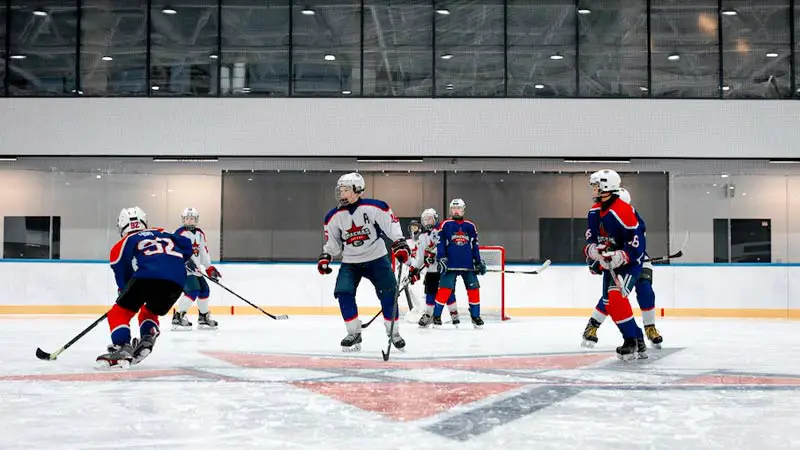
In the intricate tapestry of ice hockey, effective backchecking is a collaborative effort that relies on well-defined player roles and responsibilities.
Each player on the ice contributes uniquely to the backchecking strategy, ensuring a comprehensive defensive approach.
Understanding these roles and responsibilities is crucial for a team aiming to fortify its defensive capabilities in the pursuit of success.
First Forward Backpressure
The first forward backchecking, often the player closest to the opponent with the puck, is responsible for applying immediate pressure.
This player aims to disrupt the puck carrier’s decision-making, force turnovers, and impede their progress through the neutral zone.
By engaging the opponent early, the first forward backpressure sets the tone for the backchecking sequence.
Defensive Awareness for Defensemen
Defensemen play a pivotal role in backchecking by maintaining defensive awareness and positioning.
As the primary guardians of the defensive zone, defensemen must read the play, anticipate the opponent’s movements, and make decisions that prioritize protecting their own net.
This includes blocking passing lanes, clearing rebounds, and supporting the goaltender in maintaining a solid defensive presence.
Backchecking Forwards
Forwards not directly involved in the offensive rush must transition seamlessly into backchecking roles. This involves tracking opposing forwards and providing support to the defensive effort.
Backchecking forwards cover open opponents, disrupt passing lanes, and contribute to the overall defensive structure.
Their ability to quickly shift from offense to defense is crucial in neutralizing counterattacks.
Communication and Goalie Awareness
Effective communication and goalie awareness are essential components of backchecking responsibilities.
Players need to communicate constantly, relaying information about the opponent’s movements and potential threats. Goalies, as the last line of defense, rely on this communication to anticipate plays and prepare for incoming shots.
Backcheckers should be aware of the goaltender’s positioning and provide support in clearing rebounds or screening opponents.
Transition to Offensive Roles
Beyond defensive responsibilities, players engaged in backchecking should be prepared for a seamless transition to offensive roles.
Once possession is regained, players must quickly shift their mindset to capitalize on turnovers and create offensive opportunities.
This transition requires smart decision-making, accurate passing, and a rapid shift from a defensive to an offensive mindset.
Understanding and executing these player roles and responsibilities during backchecking not only bolsters the team’s defensive capabilities but also sets the stage for successful offensive transitions.
Drills and Practices for Improving Back-Checking
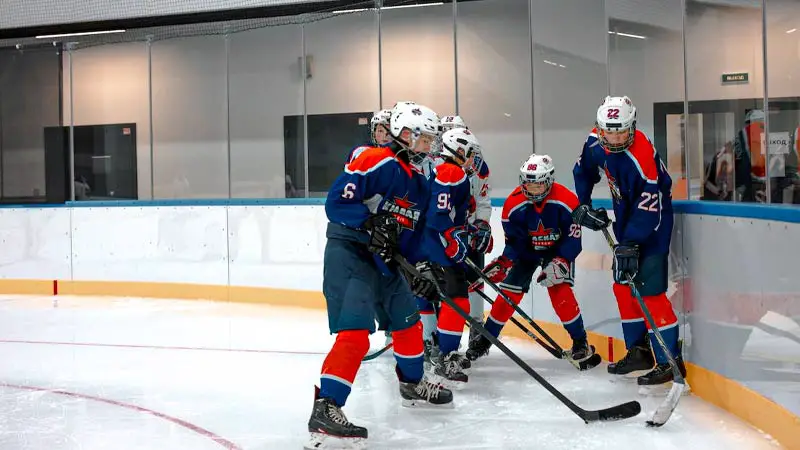
Enhancing backchecking skills in ice hockey requires targeted drills and practices that focus on specific aspects of defensive play.
Incorporating these drills into training sessions can help players develop the necessary skills and instincts to become more effective backcheckers. Here are key drills and practices for improving backchecking in hockey:
Backchecking Angling Drill
Set up a drill that simulates game situations where players practice angling opponents effectively during backchecking.
Use cones to create a neutral zone path, and have a forward with the puck skate towards the defensive zone.
The backchecker must focus on taking the correct angle to limit the puck carrier’s options, guiding them to the boards, and preventing a direct path to the net.
This drill emphasizes the importance of positioning and angling in backchecking scenarios.
2-on-1 Backchecking Drill
Create a drill that mimics a 2-on-1 situation, placing the backcheck at a numerical disadvantage. One offensive player starts with the puck, accompanied by a teammate.
The back checker must defend against the two attackers, making decisions on whether to pressure the puck carrier or cover passing lanes.
This drill enhances decision-making skills, defensive awareness, and the ability to handle challenging situations during backchecking.
Transition Drill
Incorporate a transition drill that seamlessly integrates backchecking into offensive play. Begin with a defensive scenario, where players practice regaining possession and initiating the backcheck.
Once the puck is recovered, emphasize a quick transition to offense, requiring players to move swiftly from defensive to offensive mindsets. This drill helps players develop the ability to shift roles seamlessly during gameplay.
Defensive Zone Coverage Drill
Focus on improving defensive zone coverage during backchecking by designing a drill that emphasizes proper positioning and teamwork.
Players start in defensive positions, with an offensive team attempting to penetrate the defensive zone.
Backcheckers must work together to maintain defensive structure, cover open opponents, and disrupt passing lanes. This drill enhances communication, defensive cohesion, and overall defensive effectiveness.
Puck Retrieval and Passing Drill
Backchecking often involves quick puck retrieval and accurate passing to initiate offensive transitions.
Develop a drill where players practice retrieving the puck in the defensive zone and making precise passes to teammates breaking out of the zone.
Incorporate pressure situations to simulate the need for quick decision-making and effective passing under backchecking conditions.
This drill improves puck-handling skills and enhances the ability to start offensive plays after backchecking.
Incorporating these drills and practices into training sessions provides players with targeted opportunities to refine their backchecking skills.
FAQs
What is backchecking in hockey?
Backchecking in hockey is a defensive transition play executed primarily in the neutral zone.
Its purpose is to limit the opponent’s options as they advance toward the defensive team’s end zone, disrupting offensive plays and preventing scoring opportunities.
How can players improve their backchecking skills?
Players can enhance backchecking skills through drills focusing on angling, defensive awareness, transition play, and puck retrieval.
Practicing scenarios like 2-on-1 situations and incorporating defensive zone coverage drills helps develop decision-making and teamwork, contributing to effective backchecking.
What is the role of communication in backchecking?
Communication is pivotal in backchecking as it ensures teammates are aware of opponent movements, helping to coordinate defensive efforts.
Clear communication facilitates seamless transitions, optimal positioning, and an organized defensive structure, reducing vulnerabilities and enhancing overall team performance in limiting opponent advances.
How does backchecking contribute to overall team success?
Backchecking is essential for team success as it prevents opponents from easily entering the defensive zone, disrupts offensive plays, and creates opportunities for defensive transitions.
Effective backchecking sets the foundation for a strong defensive presence, reducing the likelihood of conceding goals and contributing to overall team success.
Can backcheck transition into offensive opportunities?
Yes, a well-executed backcheck can seamlessly transition into offensive opportunities.
By regaining possession through effective backchecking, players can quickly transition to an offensive mindset, capitalizing on turnovers and exploiting gaps in the opponent’s defense.
This dual capability makes backchecking a valuable aspect of strategic team play in hockey.
Wrapping Up
In the fast-paced world of ice hockey, backchecking stands as a defensive linchpin, weaving together individual skills and collective efforts.
It’s a strategic dance that transforms defensive pursuit into a formidable force, shaping the ebb and flow of the game.
Mastering the art of backchecking is not just about stopping opponents; it’s about dictating the rhythm of play, seamlessly transitioning from defense to offense, and contributing to the triumph of the team on the ice. Thank you so much.

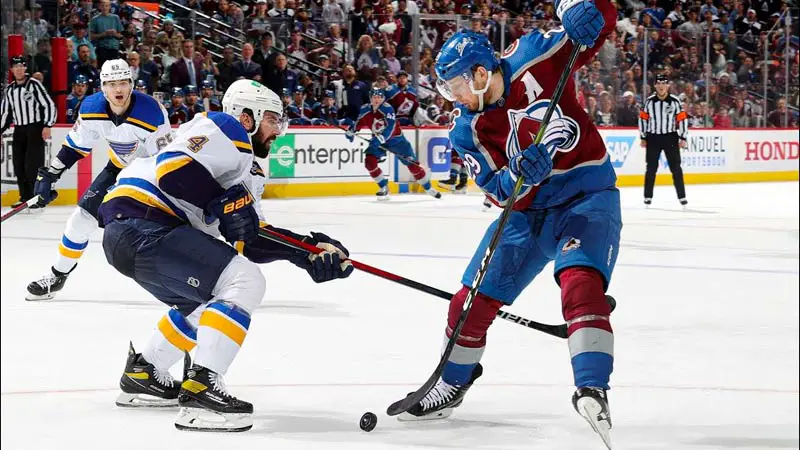






James Felix